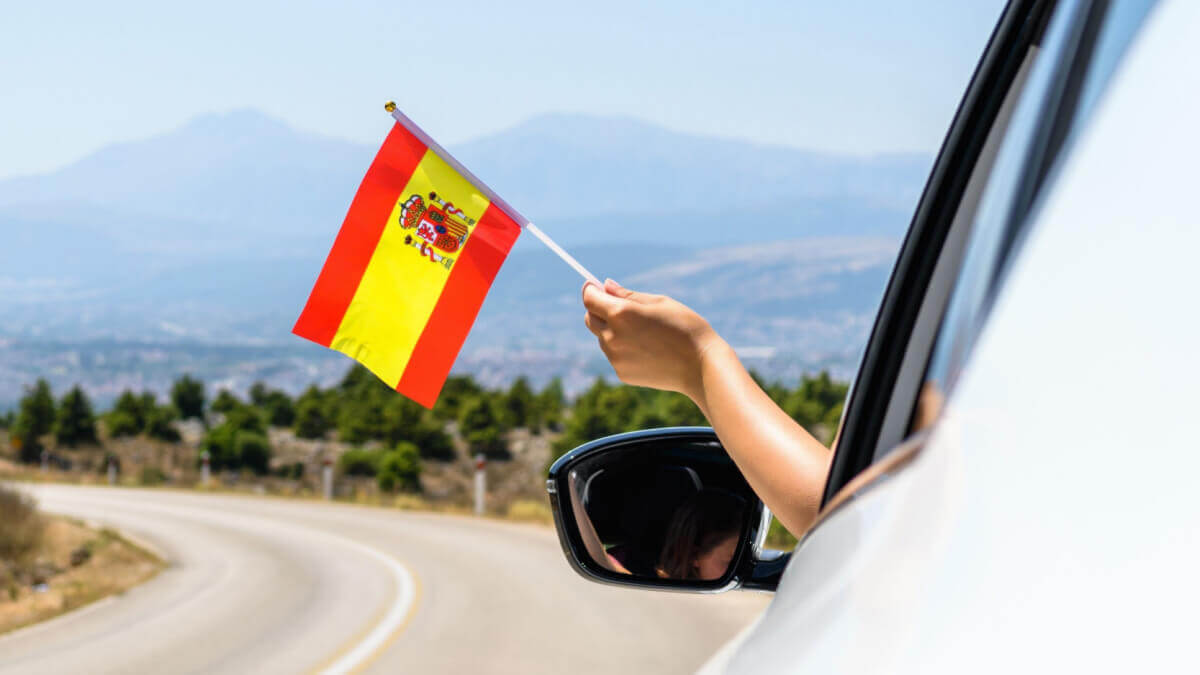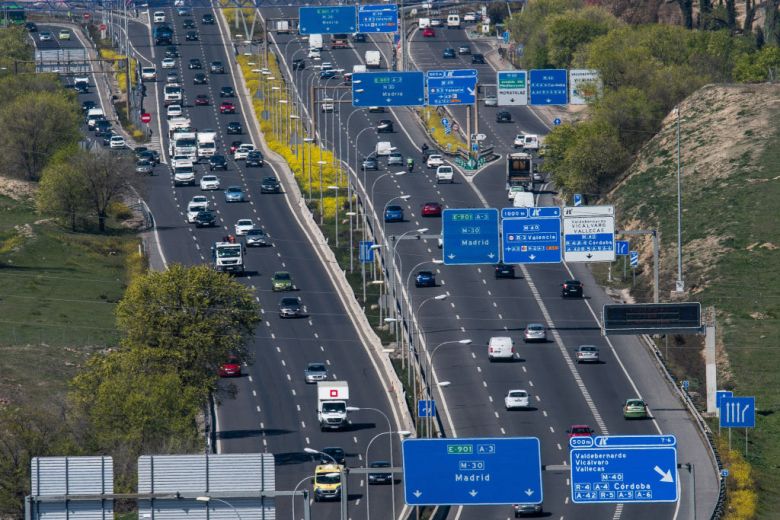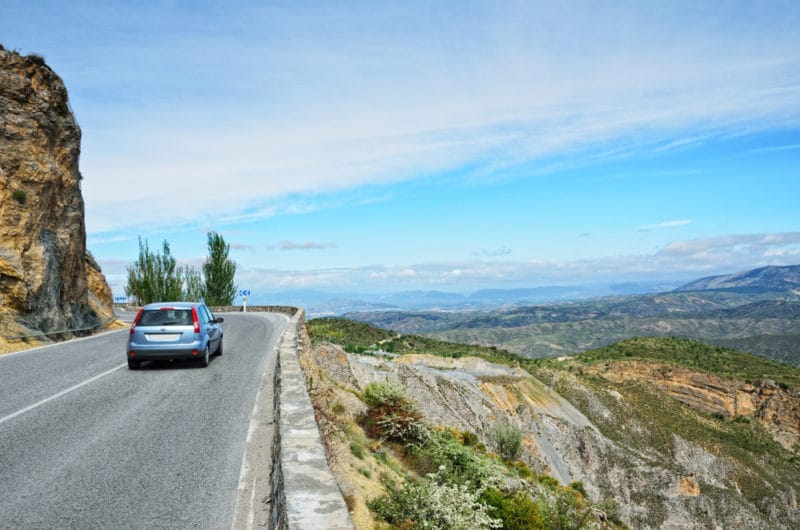Navigating Spain's roads as a foreign visitor requires a comprehensive understanding of its traffic laws and regulations to ensure a safe, compliant, and enjoyable journey. This guide summarises the essential rules, from fundamental driving practices to specific requirements for parking, child safety, and navigating urban zones.

Fundamental Driving Rules and Safety
In Spain, vehicles operate on the right side of the road. Safety belts are mandatory for all occupants, both front and rear. The use of mobile phones while driving is strictly forbidden without a hands-free device, and physically handling a device is prohibited. Motorcyclists may use certified wireless devices integrated into their helmets for communication or navigation, provided safety is not compromised. Overtaking is only permitted on the left side of the vehicle being overtaken. Helmets are mandatory for riders of motorbikes, mopeds, and bicycles. Visitors should also be aware that electric scooters are subject to specific regulations that can vary by municipality.
Speed Limits and Alcohol Regulations
Spain enforces clear speed limits based on road type :
-
Dual carriageways and motorways: 120 km/h.
-
Conventional roads: 90 km/h.
-
Urban areas: Range from 20 to 50 km/h, depending on specific signage and street design.
Strict alcohol limits are in place for drivers :
-
General drivers: 0.5 grams per litre (g/l) of alcohol in blood, or 0.25 milligrams per litre (mg/l) in exhaled air.
-
Professional and novice drivers (less than two years of experience): 0.3 g/l in blood, or 0.15 mg/l in exhaled air. These low limits imply a near-zero tolerance for impaired driving, making it safest for drivers to abstain from alcohol entirely.
Child Safety in Vehicles: Car Seats and Restraints
Spain has rigorous laws concerning child safety in vehicles. Children under 135 centimetres (approx. 5 feet) in height must use an approved child restraint system (CRS) suitable for their height and weight. It is recommended that children continue using a restraint system with a back until they exceed 150 centimetres. Infants must be secured in an approved, rear-facing car seat until they reach 9 kilograms (around one year of age), with a strong recommendation to remain rear-facing for as long as possible, ideally up to four years or 18 kilograms.
Children under 135 cm are not permitted to sit in the front seat unless all rear seats are already occupied by other children in car seats. If a child must occupy the front passenger seat under this exception, an appropriate CRS must be used, and the vehicle's airbag on that side must be deactivated.
For taxis, child car seats are not legally required for city trips within urban limits, though highly recommended for safety. However, if a taxi journey involves intercity motorways, the same car seat rules as private vehicles apply. Other transfer services like Uber and Cabify typically require a child to be in a car seat or for one to be reserved in advance. All car seats used in Spain must hold ECE R44/R129 approval. The Isofix system has been obligatory in all newly manufactured cars since 2021, simplifying installation. For tourists renting cars, it is a legal requirement that an appropriate car seat be provided for children under 1.35m tall.
Parking Regulations and Zones
Parking in Spanish cities is often regulated and not always free. Parking spaces are commonly delineated by colored lines, each with specific rules :
-
White Lines (Zona Blanca): Typically denote free parking spaces, though they can be hard to find in city centres.
-
Blue Lines (Zona Azul): Indicate paid parking areas with limited duration. Payment must be made at a parking meter, and the ticket displayed on the dashboard.
-
Green Lines (Zona Verde): Primarily reserved for residents of a specific neighborhood. Visitors are generally not permitted to use these spaces and risk a fine.
-
Yellow Lines: Unequivocally indicate parking bans. Parking here is strictly prohibited and can lead to fines or towing.
To avoid parking fines, it is crucial to pay attention to signs, use official parking areas, check parking hours, consider pre-booking parking, display tickets clearly, adhere to time limits, and avoid disabled spots.
Traffic Fines: Understanding, Payment, and Appeals
Official notifications of fines are primarily issued by post by the Directorate-General for Traffic (DGT), or published on the Tablón Edictal (TEU) if the driver's address is unknown. Electronic notifications are also possible via the Dirección Electrónica Vial (DEV).
Drivers must be vigilant against traffic fine scams, which often involve SMS or email messages with direct payment links, misspellings, or a lack of key information like file or vehicle registration numbers. Authenticity should always be verified directly with the issuing authority (DGT, town hall, or regional government) through official channels.
Regarding payment procedures and discounts: A 50% reduction is available if the driver acknowledges responsibility and pays within a voluntary period of 20 calendar days from notification. Paying within this period waives the right to appeal. If unpaid or unappealed within 20 days, the fine enters the ordinary procedure, allowing an additional 45 days for full (100%) payment. Unpaid fines after this period are forwarded to the State Agency for Tax Administration with an additional 20% surcharge.
The process for appealing a fine is structured: An initial objection can be lodged within 20 calendar days of notification, but this forfeits the 50% discount. If the objection is rejected, a driver can pursue an appeal for reconsideration within one month. If still unresolved, a contentious-administrative appeal can be made directly to court, requiring a lawyer and solicitor. A new EU Directive (2024/3237) aims to strengthen drivers' rights by stipulating that fine notifications should be in plain language, explain the offense and options, and be available in the vehicle's country of registration language.

Mandatory Vehicle Equipment and Documentation
The minimum driving age in Spain is 18 years. Several items are mandatory vehicle equipment :
-
One Reflective Vest: Must be worn if exiting the vehicle on interurban roads during an emergency and stored inside the car.
-
Two Warning Triangles: Mandatory to carry. One placed 50 meters in front and one 50 meters behind on two-way roads; only rear on one-way or multi-lane roads.
-
Flashing Light Signal (V-16 device): Since July 1, 2021, this orange flashing light can be used in place of triangles. It is placed on the highest part of the vehicle for safety. A transition period allows both until January 1, 2026, after which the V-16 light signal with geolocation will be the sole permitted device.
-
Beam Deflectors: Necessary for UK-registered vehicles to adjust headlight beams for right-hand driving.
-
UK Sticker or UK Symbol on Number Plate: Required for UK-registered vehicles. Recommended items include spare bulbs and a spare wheel or puncture repair kit.
Several required documentation items must be carried :
-
Valid Driving License: EU licenses are valid. For non-EU licenses, an International Driving Permit (IDP) is recommended and must be presented alongside the national license.
-
Vehicle Registration Documents: V5C logbook for personal vehicles or the rental contract for hired vehicles.
-
Proof of Insurance: While number plates serve as proof for EU-insured vehicles, carrying the receipt and full insurance documentation is advisable. A Green Card is recommended but not mandatory.
-
Vehicle Technical Inspection (ITV): Personal vehicles must have a valid ITV certificate; driving without one incurs a fine.
Toll Roads and Low Emission Zones (LEZs)
Spain's motorway network includes both toll roads and toll-free expressways. Toll roads, known as Autopistas, are privately managed and identified by blue motorway signs with "AP" or "PEAJE". Publicly managed Autovías are generally toll-free. Toll amounts vary by vehicle type, distance, and sometimes time or payment method.
Various payment methods are available at toll stations: cash, widely accepted debit/credit cards, and electronic tolls (OBE/Bip & Go badge / VIA-T / Telepeaje). Drivers without an electronic device should avoid lanes marked solely "VIA-T" or "Telepeaje". Some regions, like the Basque Country, use free-flow toll systems requiring advance license plate registration linked to a bank card or a compatible toll tag. Non-payment can lead to additional interest and fees.

Low Emission Zones (ZBEs - Zonas de Bajas Emisiones) are increasingly prevalent, particularly in major cities like Madrid and Barcelona, aiming to improve urban air quality. As of January 1, 2024, there are 149 cities in Spain with established LEZs, including all municipalities with a population exceeding 50,000.
Spain classifies vehicles based on DGT environmental stickers (Distintivos Ambientales), which dictate LEZ access :
-
Zero Emissions (Blue): Electric, hydrogen, plug-in hybrids (>40km range) – unrestricted access.
-
ECO (Green & Blue): Mild hybrids, LPG, natural gas, plug-in hybrids (<40km range) – generally good access.
-
C (Green): Newer petrol (from 2006), diesel (from 2014) – access depends on city rules.
-
B (Yellow): Older petrol (2000-2006), diesel (2006-2014) – most limited access.
-
A (No sticker): Older, non-compliant vehicles – banned from all ZBEs.
A critical point for foreign-plated vehicles in LEZs is that they are not eligible for Spanish DGT environmental stickers. To gain entry to ZBEs in cities like Barcelona and Madrid, foreign cars must be registered to confirm their emissions category and apply for authorisation before driving within these restricted areas. While some European environmental stickers may be considered for equivalency, this is not universally guaranteed. Compliance is monitored automatically, and fines for violations start at €200.
Key Takeaways for a Safe Trip
Driving in Spain as a foreign visitor demands proactive preparation. Prioritising familiarity with Spanish driving regulations, including mandatory equipment, documentation, and urban zone restrictions, is essential. Safety must be paramount, with strict adherence to speed limits, stringent alcohol limits, and comprehensive child safety regulations. Navigating parking wisely by understanding colour-coded zones is crucial to avoid fines. Vigilance against traffic fine scams and planning for urban access, especially concerning Low Emission Zones and their registration requirements for foreign vehicles, are also vital. A quick check for the latest updates before a trip can ensure complete compliance and a stress-free journey.